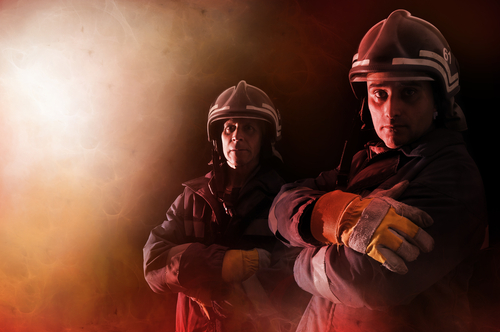 |
When three miners became trapped in a lead zinc mine in January 2010 in Bunker, Missouri, rescue teams worked together to save them, applying what they had learned in training to a real-life test of their skills.
The U.S. Department of Labor’s Mine Safety and Health Administration (MSHA) reports that the miners had become trapped when a 30-ton haulage vehicle caught fire and blocked their escape route.
The rescue team included six mine rescuers from Doe Run Company, who entered the mine via a ventilation shaft that was 60 inches wide and 580 feet deep, according to the MHSA. The trapped miners were successfully extracted with the use of a rescue escape hoist.
You know your managers could do a better job if they were trained—and now BLR® offers you an easy and affordable way to get that done—with our TrainingToday® 24/7 online Leadership Library. Get more information.
Doe Run, a St. Louis-based natural resources company and a global provider of lead, copper, and zinc concentrates, trains its mine rescuers extensively to make certain they are prepared for emergencies like the one in Bunker. Every new mining employee completes 40 hours of in-depth safety training on MSHA guidelines.
In addition, each month, its mine rescue teams participate in 8 hours of “rigorous” training to practice mine rescue scenarios, the company states. Their training regimen increases in preparation for mine rescue competitions, which Doe Run says are aimed at sharpening rescuers’ skills and giving them opportunities to share best practices. The company often uses subject matter experts (i.e., other Doe Run teams or team alumni) to create emergency response simulations. Afterward, team members collaborate, critique one another’s performance, and receive advice from “tenured” team members, the company reports.
Doe Run credits this process with helping its “Maroon Team” earn numerous honors at regional mine rescue competitions, a national mine rescue title in 2010, and edging out 41 other teams from 18 states to win the field competition this August in MSHA’s 2014 National Metal and Nonmetal Mine Rescue Contest in Lexington, Kentucky. The company’s “Gray Team,” which also participated in the 4-day event, placed sixth in the field competition.
“We are proud to have outstanding mine rescue teams to represent Doe Run’s commitment to safety at a national level,” said Steve Batts, general manager at Doe Run’s Southeast Missouri Mining and Milling Division (SEMO). “The safety of our employees is our top priority, and each of us works carefully every day to prepare for the unexpected. Being recognized as national champions in a field of talented mine rescue teams is not only an honor, but also helps support the safety of our employees underground.”
Worried about ever getting your managers and supervisors trained to be effective leaders? It isn’t easy to fit it in—schedulewise or budgetwise—but now there’s BLR’s Leadership Library for Managers and Supervisors. Train all your people, at their convenience, 24/7, for one standard fee. Get more information.
During the MSHA field competition, teams were evaluated on “how well team members adhered to mine rescue procedures and how quickly they finished specific tasks, including a written exam and successful use of first aid, gas testing, and breathing apparatuses,” the company reports. “Mine rescuers work under extremely high pressure when they are called to respond to a crisis,” said Jason England, manager of mine safety at SEMO. “These competitions simulate that stress. Preparing for and competing in trials allows mine rescue teams to hone their skills, so in the event of a real emergency, the teams are well equipped to work together to manage the situation.”
“Mine rescuers are truly a special breed of people,” said Joseph A. Main, assistant secretary of labor for mine safety and health. “These brave, selfless individuals are called up at a moment’s notice to travel miles underground, often in extreme conditions. We owe them our gratitude and support, and the best training available for these high-risk missions.”
